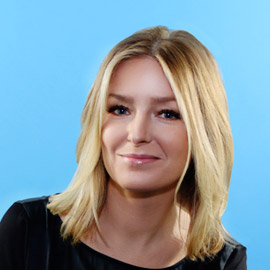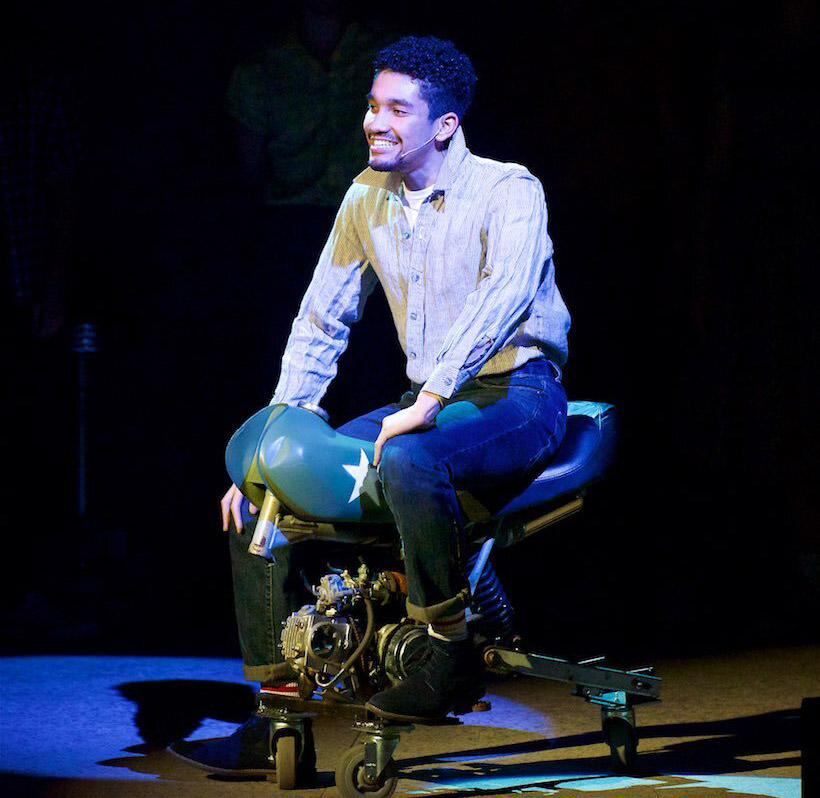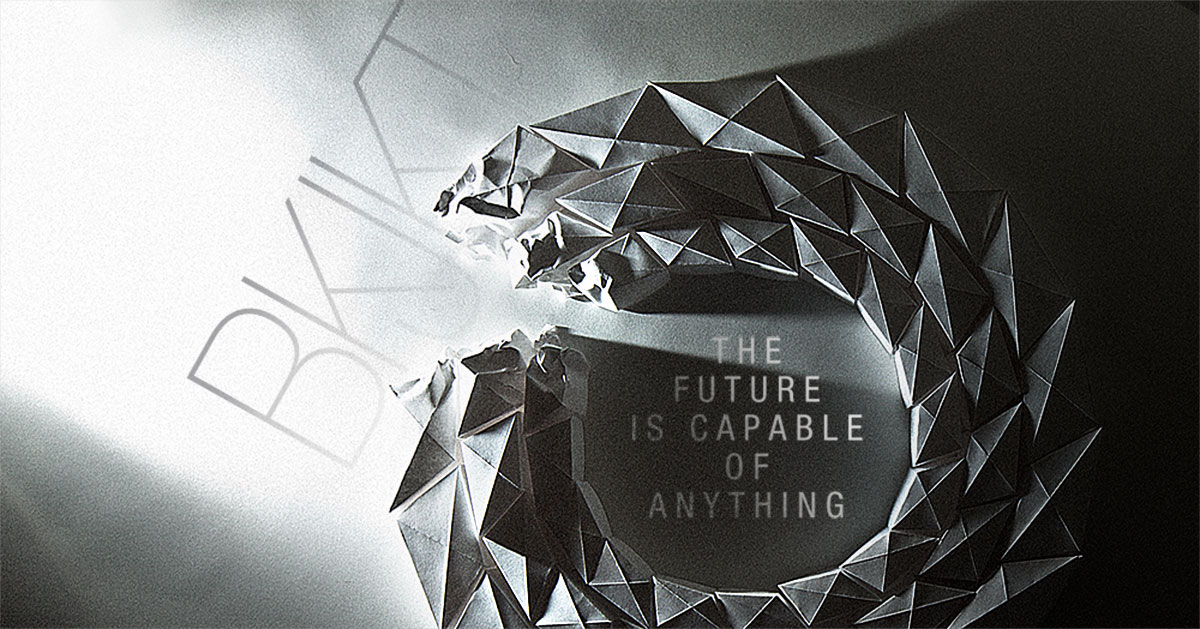
“My mission is to renew the basic bargain of America: If you work hard and do your part, you and your family should be able to get ahead and stay ahead. And when you get ahead, America will get ahead too.”
—Hillary Rodham Clinton
Amidst the 2016 election year, my co-creators and I took hard looks at our divided country. We were particularly interested in the tenets of our country that made this plurality possible, and what it is like to grow up and be formed by so many conflicting ideals. Being lovers of dystopian fiction, we used that tried-and-true construct to formulate a fantastical future and see what fuzzy comments it made on our society of today.
The “fuzziness” was important, and came about by not starting with one particular comment to make in the first place. Rather, we designed a world that strove to reflect what the many opposing voices were shouting. From there, we put the world of today in “conversation” with this fictional world of the future, and let that story unfold.
I led the worldbuilding, not only with my two co-creators, but also inviting our artist/actor/dancers that performed the piece to devise the nature of our fictional world with us at mileposts along the way in our three-part project workshop journey.
The “fuzziness” was important, and came about by not starting with one particular comment to make in the first place. Rather, we designed a world that strove to reflect what the many opposing voices were shouting. From there, we put the world of today in “conversation” with this fictional world of the future, and let that story unfold.
I led the worldbuilding, not only with my two co-creators, but also inviting our artist/actor/dancers that performed the piece to devise the nature of our fictional world with us at mileposts along the way in our three-part project workshop journey.
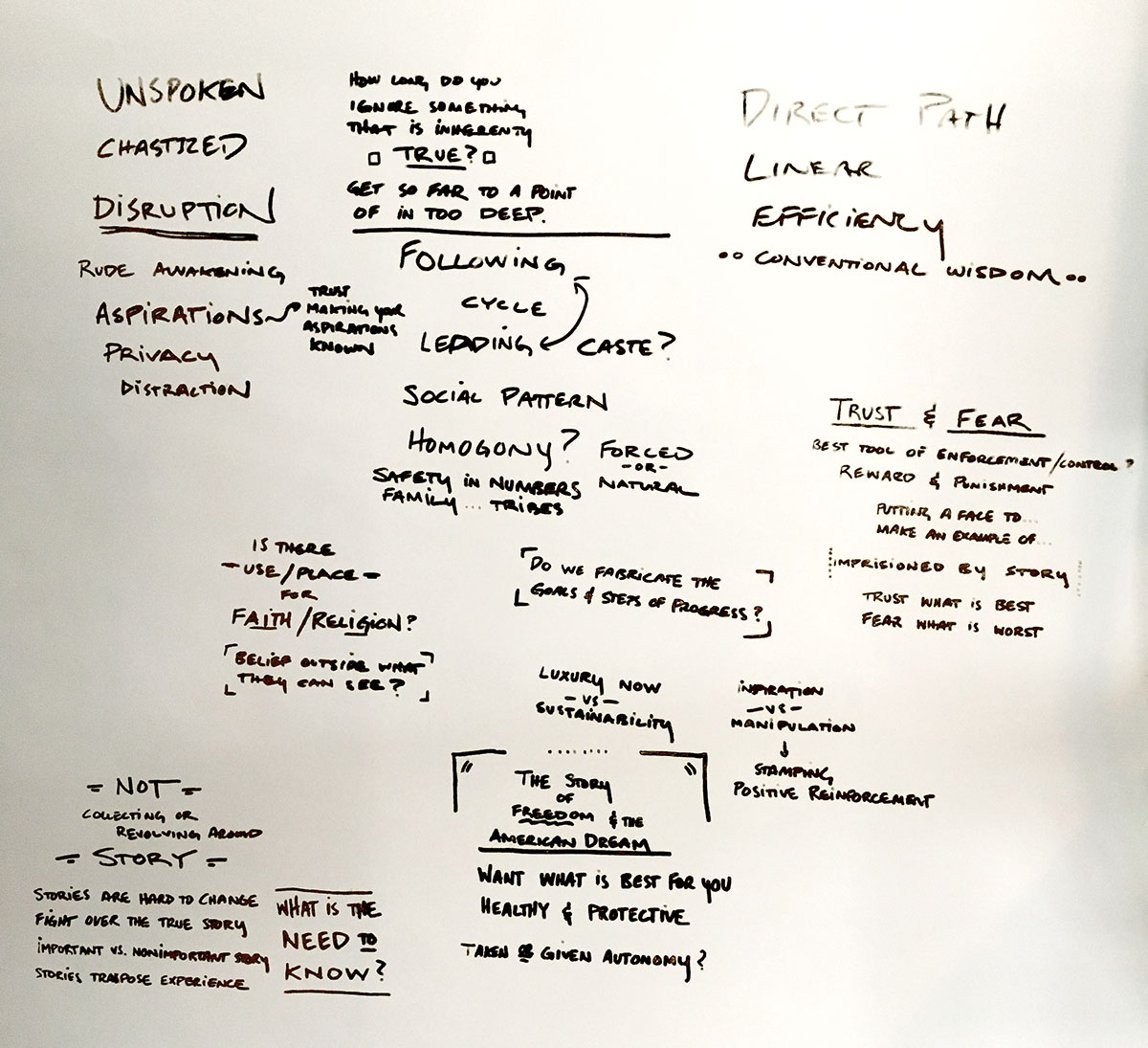
Group brainstorming during the worldbuilding charette with the team.
Story
Once, an authoritarian leader took advantage of a young nation struggling with the growing pains of equality and inclusion. The society fractured, and humanity nearly destroyed itself. This society built itself back up with the rhetoric taught by its dictatorial influencers—built upon the notion that if society is defined by creating contentment, then unrest cannot devolve to disaster again.
This future world tackled issues of:
Truth
Fairness
Empathy
Purpose
Scarcity
Success
The way they created universal contentment was by limiting possibilities to only the necessities that are well within each person’s grasp. This future society has forgotten all about slavery that led to the civil rights movement. They know nothing of the Holocaust and the defeat of dictators. They never learned about a world that restricted rights, education, and freedom to an entire gender leading to increased global disease, poverty, violence, and hunger. To them—the world has always been what it is to them now. They live by the motto: I am capable of anything I am capable of. They don’t read or create or learn anything beyond what already is, and they might revolt if only they knew the concept existed.
This is (seemingly) a world of independence, revolving around the story of the American Dream—the Upward Mobility (Myth). They grow up knowing they live in a world designed by people just like them. Everyone is capable of achieve their dream, but only in the prescribed fashion set by the community. In this near future, everyone has unwittingly traded their free pursuits and exchange of ideas for guaranteed success and contentment. Except one girl, Bkjkt. We watch through her eyes a society that has given up empathy and personal desire. A sweeping adventure ensues as Bkjkt, inspired by pieces of a universe calling from the past, leaves her restrictive life behind and meets the first friend she's ever had. Together, they dig into the lost stories of their people, finding themselves along the way.
This is (seemingly) a world of independence, revolving around the story of the American Dream—the Upward Mobility (Myth). They grow up knowing they live in a world designed by people just like them. Everyone is capable of achieve their dream, but only in the prescribed fashion set by the community. In this near future, everyone has unwittingly traded their free pursuits and exchange of ideas for guaranteed success and contentment. Except one girl, Bkjkt. We watch through her eyes a society that has given up empathy and personal desire. A sweeping adventure ensues as Bkjkt, inspired by pieces of a universe calling from the past, leaves her restrictive life behind and meets the first friend she's ever had. Together, they dig into the lost stories of their people, finding themselves along the way.
Production
As creators, we tackled the trappings and power of language. My interests and strengths in semiotics, myth, and design language, along with my co-creators’ expertise in movement language, molded a style to the piece that folded into the universe of the story. As with other dystopian tales, the words used and not used are tools of manipulation. We were able to push this further through non-realism and allow these different modes of language to inform not only the framework of the story, but the telling and the interpretation. I worked with my co-creators to specifically use movement to indicate changes in place or idea. This initially came out of necessity because of the limited resources for our workshop, but actually made the piece more whole.
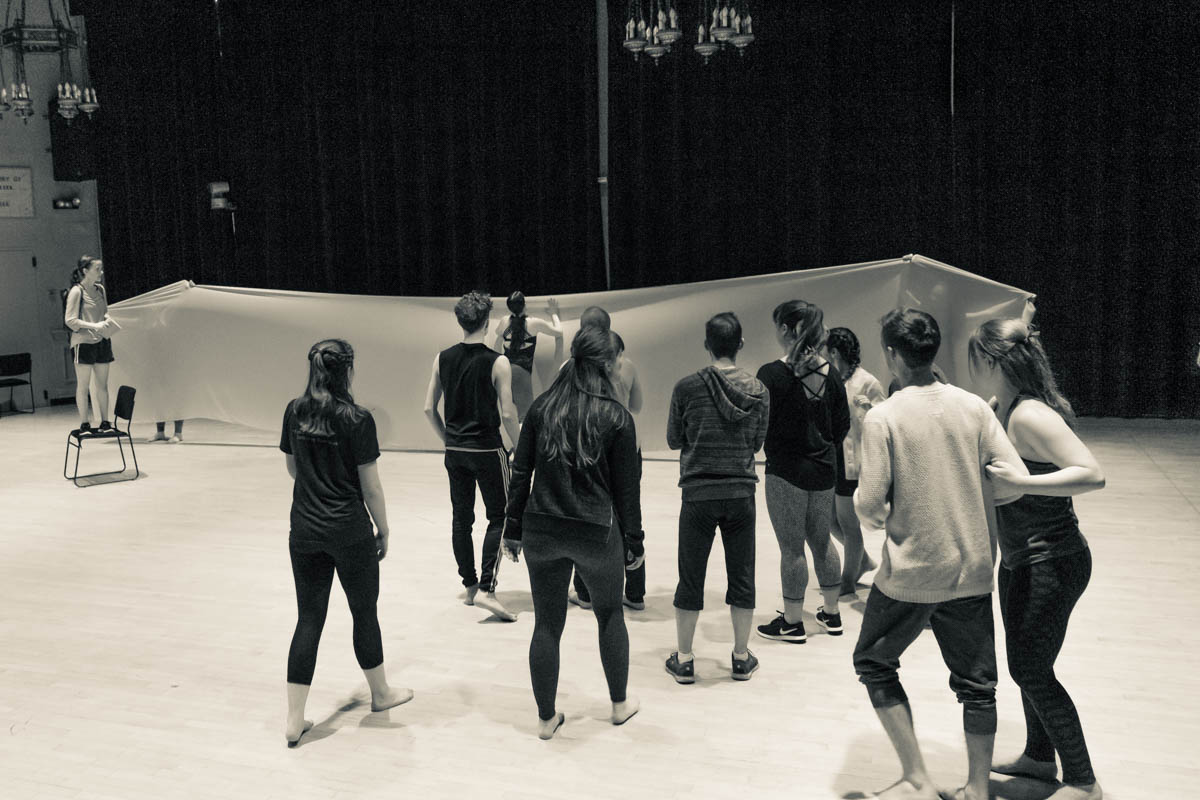

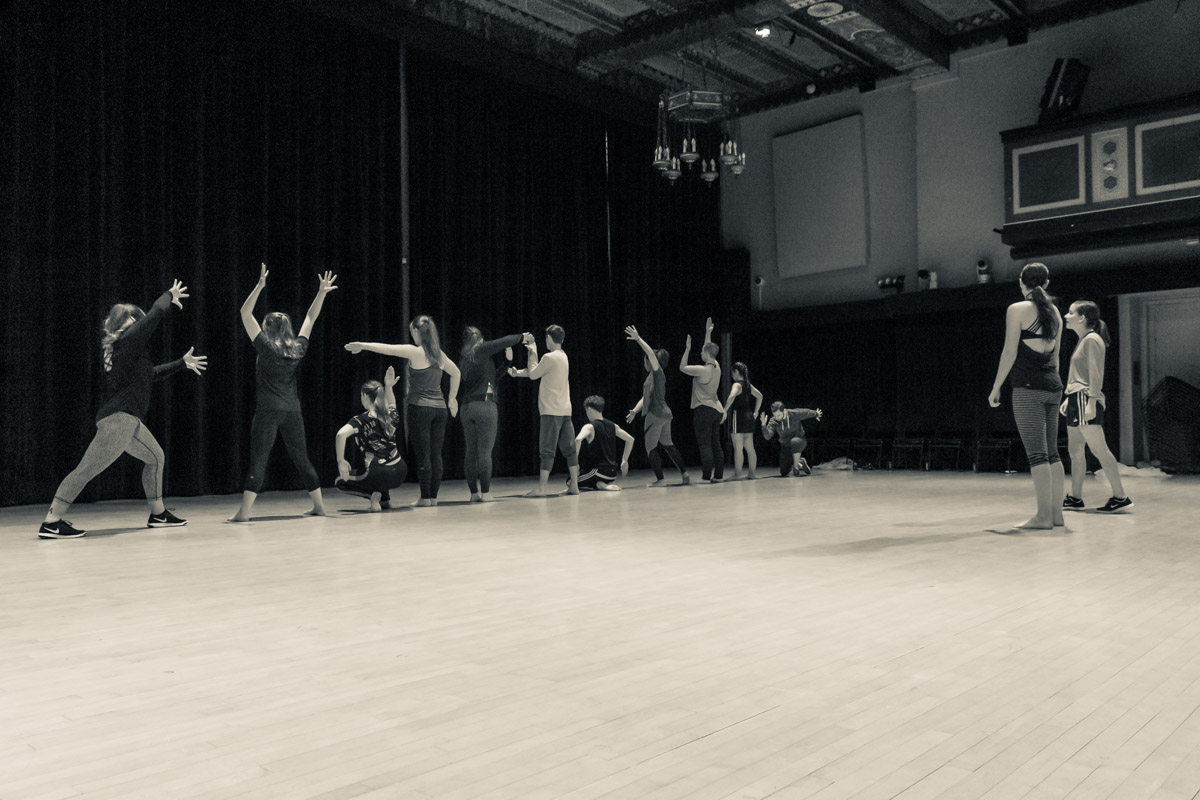
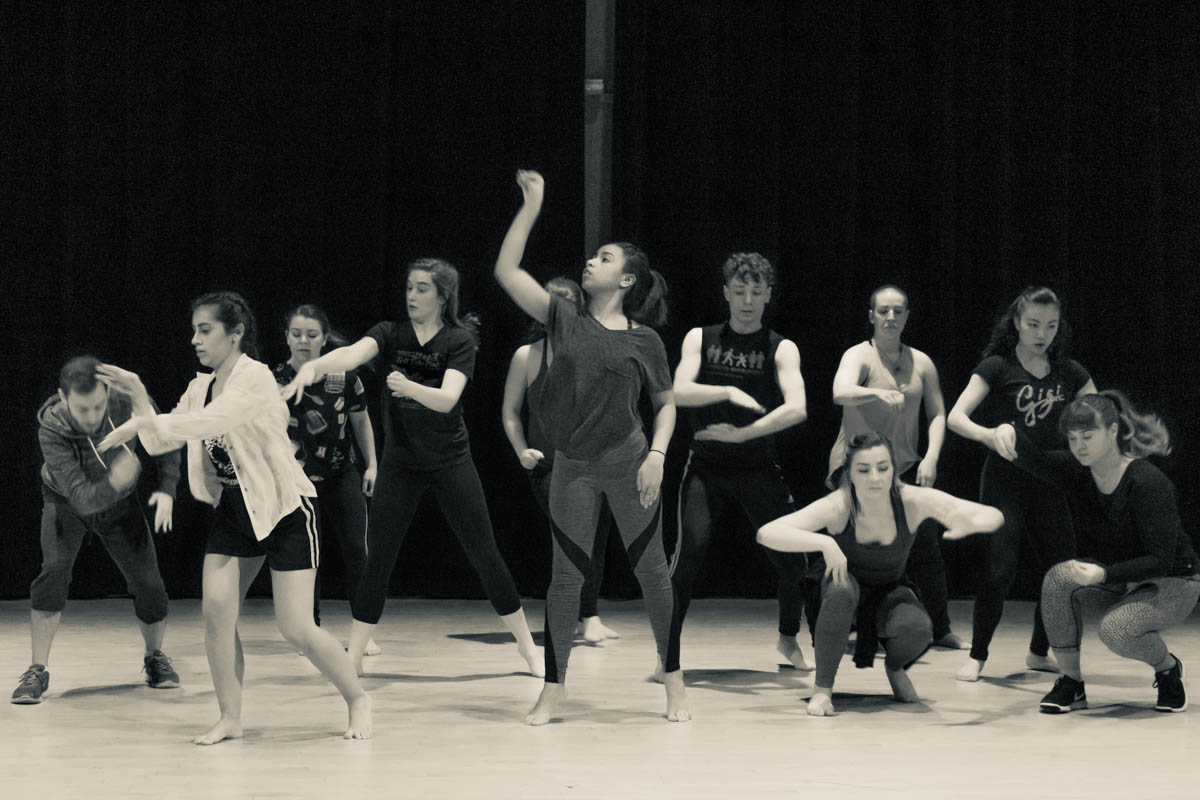
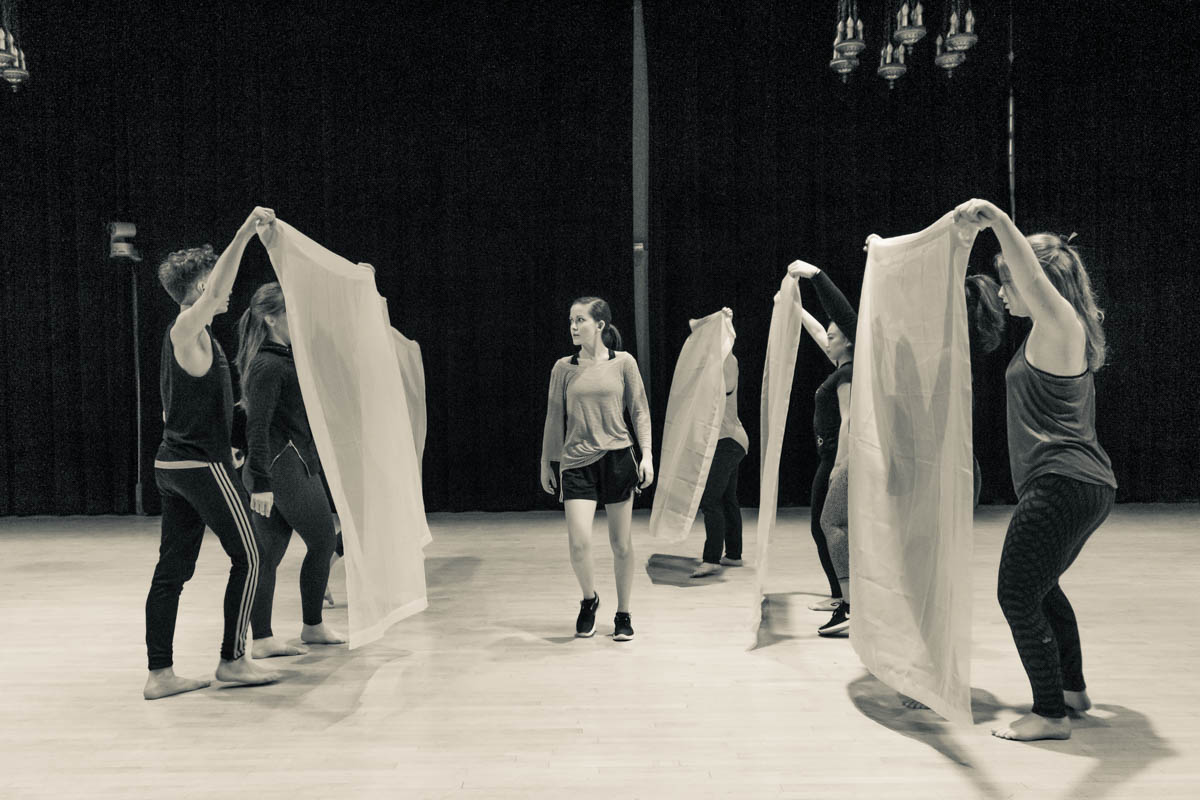
A lot of our work was in stripping away as much didactic narrative as possible. We were able to explore how to reveal different truths through different modes of language, and we received audience feedback that the way we leaned into ambiguity throughout the piece was most effective. My desire was to, slowly over the course of the piece, add an additional layer of language by using the audience members’ mobile devices. As a way to slowly indoctrinate the audience and make them members of our dystopian society, an app downloaded ahead of time would allow them to receive contextual messages, images, and sounds that react to the environment on stage, as well as an additional layer of “communication” between the audience members themselves. In addition, the movement language lended itself to an augmented reality layer that would form from the performers’ gesture work, not in a realistic creation of the entire environment but more as a magical-realistic inkling—an impression. This feels more germane to the ambiguity of this piece’s language, and the sfumato of Right and Wrong.
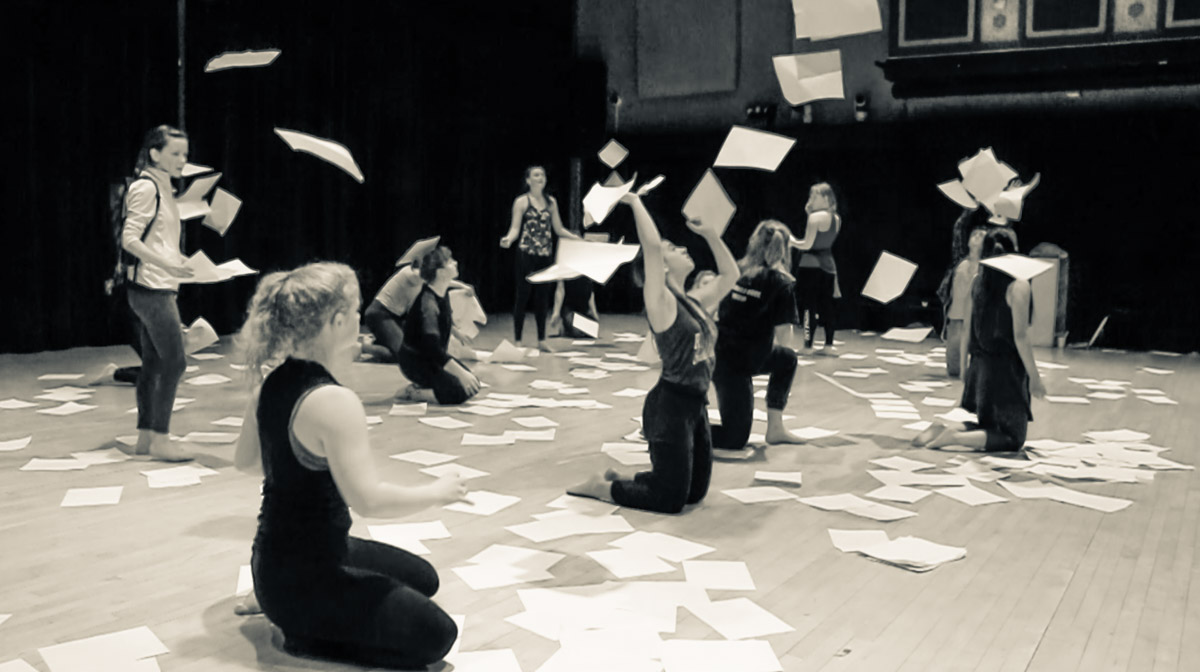
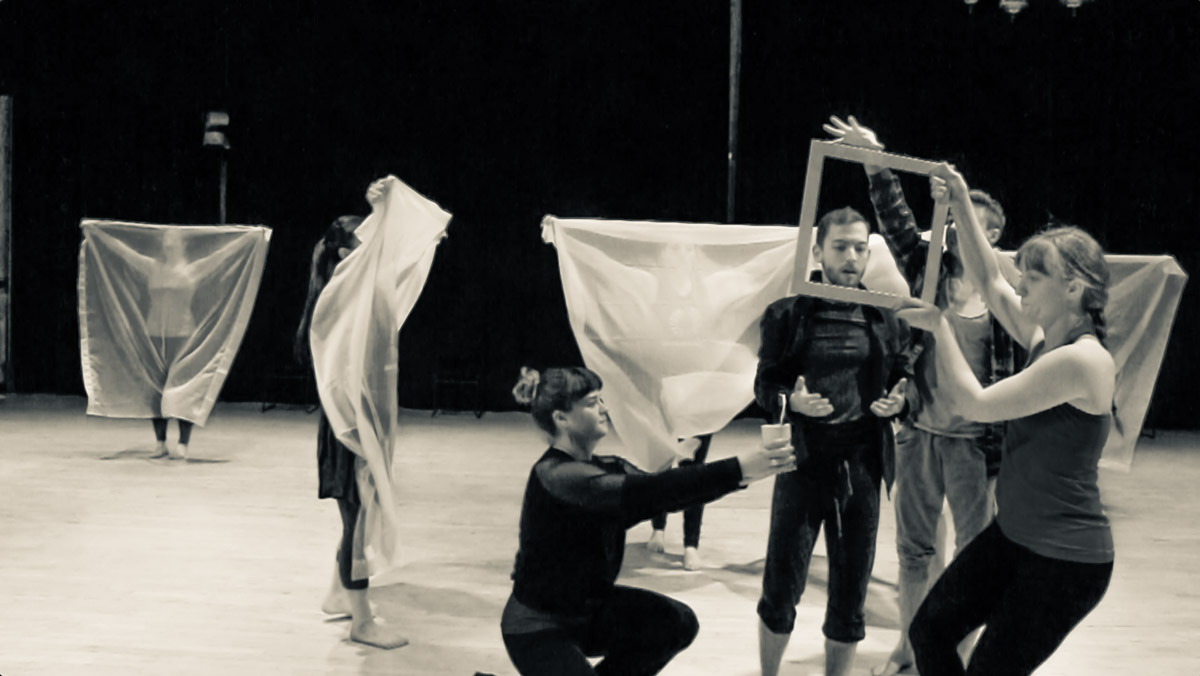
Artwork
The artwork for the show is a bit Constructivist in style, although could also be considered Bauhausian—a purposeful tie between the two opposing (yet linked) ideologies happening at the same time in Russia and Germany, respectively, that coincided with WWI.
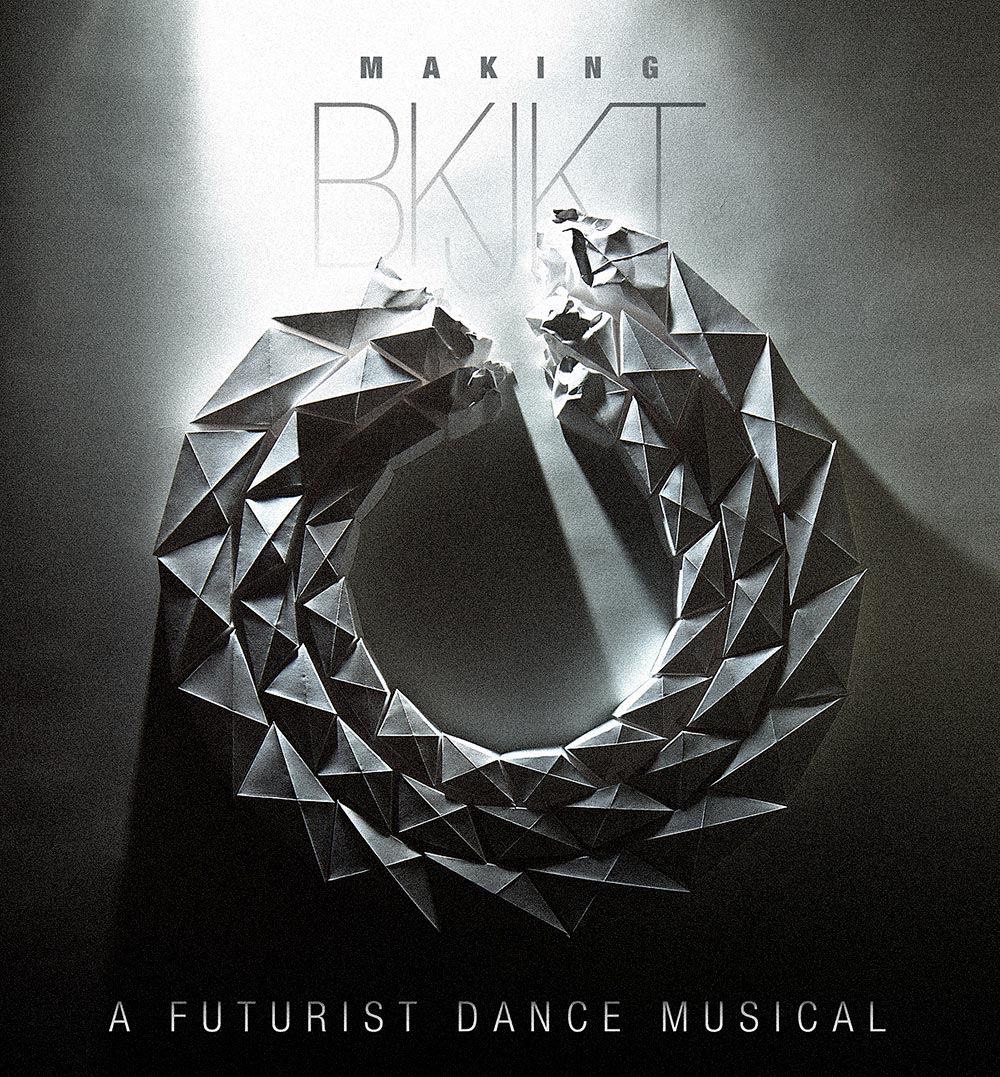
Artwork for print and digital.
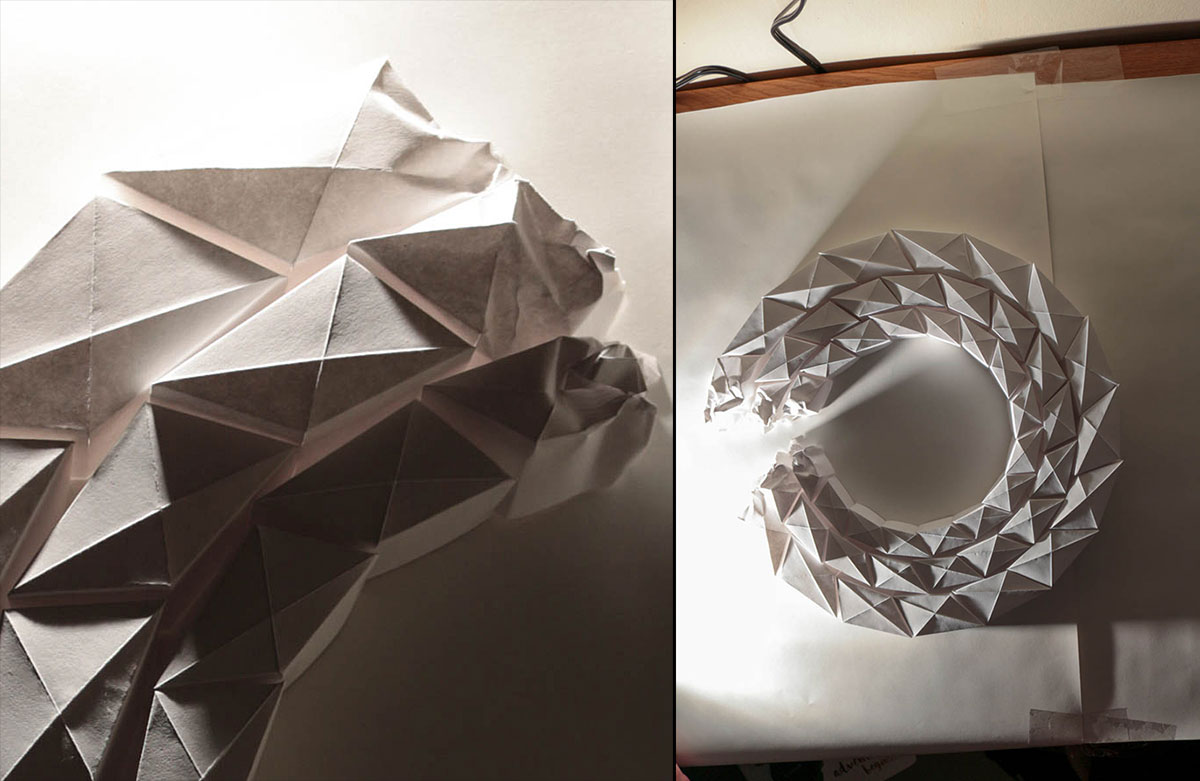
Photographing the paper sculpture to create the artwork.
It represents an exaggerated perspective of a circular wall as seen from above, which is a reference to how patterns and systems can be revealed from above (a plot device used in Making BKJKT) and such exaggerated perspective often used for its optical illusion effect (similar to the characters discovering the wall that surrounds the community in the show is also an illusion of sorts). Part of the wall in the artwork has been destroyed, allowing light to shine in. I designed and constructed the artwork using folded paper “bricks.”
Highlight Reel
NEW PROJECT Development
Making BKJKT
Co-Creator / Co-Writer / Production Design / Sound Design / Graphic Design
92Y Musical Theatre Development Lab, NY 2016
Co-Creator / Co-Writer / Director / Co-Choreographer: Courtney Laine Self
Co-Creator / Co-Choreographer: Megan Doyle
Music: Ben Folds
Co-Creator / Co-Writer / Director / Co-Choreographer: Courtney Laine Self
Co-Creator / Co-Choreographer: Megan Doyle
Music: Ben Folds

